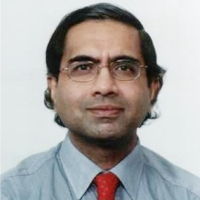Infectious Disease: Maui Derm 2019 Highlights

Ted Rosen, MD
Session moderator Ted Rosen, MD provided a thorough overview of the latest in infectious disease. Dr. Rosen discussed the arbovirus threat in the United States, including chikungunya and zika. Dr. Rosen also mentioned ongoing research on the potential oncolytic effects of the zika virus for neuroblastoma and glioblastoma. Yellow fever outbreak in Brazil and West Nile Virus in the US was reviewed, as well as the rising incidence of syphilis gonorrhea in the US. Dr. Rosen discussed his own research on ozenoxacin cream for the treatment of adult and pediatric patients with impetigo. Other research on 15% and 10% potassium hydroxide for Molluscum contagiosum was also reviewed. Other topics discussed include the possibility of a two-drug regimen for stable HIV, evidence for oral antibiotic exposure and increased risk of kidney disease, E. coli resistance to antibiotics after exposure to fluoxetine, tecovirimat for smallpox, leptospirosis associated with contaminated water from floods and the use of chemoprophylaxis after floods to reduce outbreaks, antibiotic links to increased risk of death in heart disease patients and cancer relapse, and hypoglycemia in patients taking fluoroquinolone.

Dr. Sheila Fallon-Friedlander
- Invasive mold disease in immunocompromised children
- Eczema herpeticum
- A study showing a lack of significant efficacy of cyclosporine in pediatric cases of Stevens–Johnson syndrome/toxic epidermal necrolysis.
- The case of a three-day-old boy with diffuse superficial skin erosions and brown crusts on the back
- Perianal pseudoverrucous papules and nodules
- Ivermectin and permethrin for treating scabies

Dr. Aditya K Gupta
Aditya K. Gupta, MD, PhD, FAAD, FRCP (C) provided attendees with updates on onychomycosis and tinea. Regarding onychomycosis epidemiology, Dr. Gupta addressed the role of the immune system in conferring protection or susceptibility to dermatophyte infections, the increased risk of Candida or Aspergillus onychomycosis in elderly individuals or those with renal transplants, HIV, or diabetes, and the increasing prevalence of onychomycosis. Dr. Gupta also compared diagnostic strategies and reviewed strain typing for onychomycosis. In addition, Dr. Gupta reviewed optimal regimens for oral drugs such as terbinafine, itraconazole, and fluconazole. He also discussed research on posaconazole and albaconazole. Topical therapies including ciclopirox 8% HPCH nail lacquer, efinaconazole, and tavaborole were reviewed. In addition, Dr. Gupta discussed a critical review of laser studies. Dr. Gupta finished his presentation with strategies to prevent onychomycosis recurrence and learning objectives for the future.



